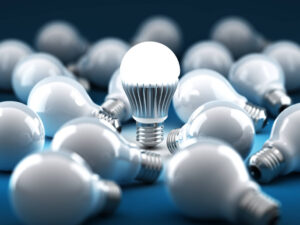Lighting design is akin to the art of orchestrating a symphony, where various factors converge harmoniously to create an optimal visual experience. This article delves into the multifaceted considerations essential for designing an efficient lighting system.
By adhering to principles of energy efficiency, lighting quality, functionality, and spatial layout, designers can achieve a symbiotic integration of natural light and artificial illumination.
Selection of suitable fixtures and bulbs, incorporation of controls and automation, as well as diligent maintenance are pivotal in illuminating spaces with precision and finesse.
Key Takeaways What Are the Factors Need to Consider When Designing a Lighting System
- Energy efficiency is essential in lighting system design, as it reduces energy consumption and electricity bills while also having a positive environmental impact.
- Lighting quality should be evaluated by considering the balance between brightness and ambiance, ensuring appropriate illumination for the space and creating the desired mood and atmosphere.
- Functionality and purpose should be considered when designing a lighting system, including appropriate lighting levels, even illumination, accurate color representation, and the use of energy-efficient technologies and intelligent control systems.
- The space and layout of the area should be taken into account, allowing for flexibility and adaptability, incorporating natural lighting integration, and considering the placement of windows, glazing properties, and shading devices.
Energy Efficiency
Energy efficiency is a crucial factor that should be considered when designing a lighting system. A lighting system that is energy efficient not only reduces the overall energy consumption, but also provides cost effectiveness in terms of electricity bills. By utilizing energy-efficient technologies and design strategies, such as using LED lights or incorporating daylighting systems, the amount of energy required for lighting can be significantly reduced. This leads to lower operating costs and increased savings over the lifetime of the lighting system.

In addition to cost effectiveness, energy efficiency also has a positive environmental impact. By reducing energy consumption, less greenhouse gas emissions are produced, contributing to a more sustainable and environmentally friendly approach to lighting design. Therefore, considering energy efficiency is essential for both economic and environmental reasons when designing a lighting system.
Lighting Quality
When considering lighting quality, two key factors to evaluate are brightness versus ambiance and the available color temperature options.

Brightness refers to the level of light emitted by a lighting fixture, while ambiance refers to the overall mood or atmosphere created by the lighting. The choice between these two factors depends on the specific needs and preferences of the space being illuminated.
Additionally, color temperature options play a crucial role in determining the perceived warmth or coolness of the light, allowing for further customization and control over the lighting experience.
Brightness Vs. Ambiance
The consideration of brightness versus ambiance is crucial when designing a lighting system. The balance between these two factors can greatly impact the overall aesthetics and functionality of the space.

Here are five key points to consider in lighting design:
- Brightness: The level of illumination provided by the lighting fixtures should be appropriate for the intended use of the space.
- Ambiance: The mood and atmosphere created by the lighting should align with the purpose and desired experience of the environment.
- Lighting aesthetics: The visual appeal and integration of lighting fixtures into the overall design scheme is essential.
- Energy efficiency: Implementing energy-efficient lighting solutions not only reduces environmental impact but also saves costs in the long run.
- Flexibility: Designing a system that allows for adjustable brightness levels and different ambiance settings provides versatility for various activities or events.
Color Temperature Options
Color temperature options play a significant role in determining the mood and atmosphere of a space. In lighting design principles, color temperature refers to the perceived warmth or coolness of light emitted by a source. Measured in Kelvin (K), lower values indicate warmer, more yellowish light, while higher values signify cooler, bluish light.

The psychological impact of color temperature should not be underestimated. Warmer tones are often associated with relaxation and coziness, making them suitable for areas such as bedrooms or living rooms. Cooler tones, on the other hand, create a sense of alertness and focus, making them ideal for workspaces or task-oriented areas.
Functionality and Purpose
One important aspect to consider when designing a lighting system is the functionality and purpose it serves. The design considerations and aesthetic appeal of the lighting system play a crucial role in creating an optimal environment for various applications.
Here are some key factors to take into account:
- Lighting levels: Determining the appropriate brightness levels based on the specific requirements of the space.
- Light distribution: Ensuring even illumination throughout the area, considering factors such as shadows and glare.
- Color rendering: Selecting light sources that accurately represent colors, enhancing visual clarity and perception.
- Energy efficiency: Incorporating energy-efficient technologies to reduce power consumption and minimize environmental impact.
- Control systems: Implementing intelligent control systems that allow for customization, flexibility, and ease of use.
Space and Layout
Space and layout play a crucial role in determining the effectiveness of a lighting system. When designing a lighting system, it is important to consider the specific requirements of the space and how the layout can affect the distribution of light.
Flexibility and adaptability are key factors to be considered, as they allow for adjustments to accommodate different uses within the space. Lighting design trends emphasize the importance of creating dynamic environments that can be easily modified to meet changing needs. This includes incorporating movable fixtures, adjustable controls, and versatile placement options. By considering these elements, designers can create lighting systems that enhance functionality while also providing aesthetic appeal.
Transitioning into the subsequent section about natural lighting integration, it becomes evident that combining natural and artificial light sources is another important consideration in creating an effective lighting system.
Natural Lighting Integration
The integration of natural lighting into a lighting system is a significant aspect to be explored in order to optimize the overall effectiveness and performance. Natural lighting, also known as daylighting, offers numerous benefits such as energy savings, improved well-being, and increased productivity.
When designing a lighting system that incorporates natural light, several factors need to be considered:
- Daylight harvesting: This technique involves using sensors and controls to automatically adjust artificial lighting levels based on available natural light.
- Window placement: The strategic placement of windows allows for maximum penetration of natural light into the space.
- Glazing properties: The type of glass used in windows affects the amount of daylight transmitted and heat gain or loss.
- Shading devices: These can be used to control direct sunlight, reduce glare, and prevent overheating in spaces with abundant natural light.
- Light diffusion techniques: Diffusing materials or methods can be employed to evenly distribute natural light throughout the space.
Light Fixtures and Bulb Types
Light fixtures and bulb types play a crucial role in determining the quality of artificial lighting and its compatibility with natural light integration strategies. When designing a lighting system, it is important to consider the light intensity required for different areas or activities. For example, task-oriented spaces like offices may require higher light levels compared to relaxation areas such as living rooms.
Design aesthetics also play a significant role in selecting appropriate fixtures and bulbs. The style, shape, material, and color of the fixture can impact the overall visual appeal of the space. Additionally, bulb types such as incandescent, fluorescent, LED, or halogen can further enhance or detract from the desired design aesthetic.
Therefore, careful consideration of both light intensity requirements and design aesthetics is essential when choosing light fixtures and bulb types for an effective lighting system design.
Controls and Automation
This discussion will focus on the key points of energy efficiency options, integration with technology, and user-friendly control interfaces in the context of controls and automation.
Energy efficiency options refer to the various strategies and technologies available to optimize energy consumption in a system or device.
Integration with technology explores how control systems can be seamlessly connected to other technological components for enhanced functionality and performance.
User-friendly control interfaces aim to provide intuitive and easy-to-use interfaces that allow users to effortlessly interact with and manage their automated systems.
Energy Efficiency Options
One option to consider for enhancing energy efficiency in lighting systems is the use of LED technology. LEDs, or Light Emitting Diodes, offer numerous benefits that make them an attractive choice for both residential and commercial lighting applications.
- Long Lifespan: LED lights have a significantly longer lifespan compared to traditional incandescent bulbs, reducing the need for frequent replacements.
- Energy Efficiency: LEDs consume less energy and produce more light output per watt than traditional lighting options, resulting in lower electricity bills.
- Lighting Design Aesthetics: LED lights are available in various shapes, sizes, and colors, allowing designers to create customized lighting schemes that enhance the overall aesthetic appeal of a space.
- Reduced Heat Emission: Unlike incandescent bulbs, which waste energy as heat, LEDs emit very little heat, making them safer and more comfortable to use.
- Cost Saving Options: While the initial cost of installing LED lighting may be higher than other options, the long-term savings on maintenance and energy costs make them a cost-effective choice.
Overall, incorporating LED technology into lighting systems offers significant advantages in terms of energy efficiency, design flexibility, and cost savings.
Integration With Technology
Integration of LED technology with existing technological systems can lead to improved energy efficiency and enhanced functionality in various applications. The emergence of smart lighting has revolutionized the way we control and manage our lighting systems.
Smart lighting refers to the integration of advanced connectivity solutions into lighting fixtures, allowing for remote control, automation, and customization. By connecting LED lights to a network or a central control system, users can easily adjust brightness levels, color temperatures, and even create dynamic lighting scenes according to their preferences. Moreover, smart lighting enables energy-saving features such as occupancy sensing and daylight harvesting, further optimizing energy consumption.
These connectivity solutions not only provide convenience but also contribute to significant cost savings by reducing wasted energy. In the following section, we will explore the importance of user-friendly control interfaces in ensuring efficient operation and ease of use.
User-Friendly Control Interfaces
The usability and accessibility of control interfaces play a crucial role in ensuring efficient operation and ease of use for users managing smart lighting systems. To create an intuitive design and enhance the user experience, several factors need to be considered:
- Clear and concise interface layout
- Intuitive navigation and controls
- Customizable settings to suit individual preferences
- Integration with voice commands or gesture recognition technology
- Compatibility with multiple devices
By incorporating these elements into the control interfaces of smart lighting systems, users can easily manage their lighting settings without any confusion or frustration. However, it is essential to note that once the system is installed, maintenance and upkeep are equally important to ensure its optimal performance and longevity.
Transitioning into the subsequent section about ‘maintenance and upkeep’, it becomes evident that regular maintenance is necessary to keep the system functioning efficiently.
Maintenance and Upkeep
Maintenance and upkeep of a lighting system is crucial for ensuring its optimal performance and longevity.
Proper maintenance not only enhances the overall functionality of the system but also helps in minimizing maintenance costs and maximizing its lifespan.
To achieve this, regular inspections should be conducted to identify any potential issues or faults that may affect the system’s efficiency.
Maintenance tasks such as cleaning fixtures, replacing bulbs, checking electrical connections, and inspecting control interfaces should be carried out periodically.
Additionally, conducting a thorough lifespan analysis can aid in determining the expected lifespan of different components within the lighting system, allowing for proactive replacement before they fail.
Frequently Asked Questions
How Much Does a Lighting System Typically Cost to Install and Maintain?
The cost of installing and maintaining a lighting system depends on various factors, such as the type of fixtures used, the complexity of the installation process, energy efficiency requirements, and ongoing maintenance needs.
Are There Any Regulations or Codes That Need to Be Considered When Designing a Lighting System?
When designing a lighting system, it is crucial to consider regulations, codes, compliance with standards, and safety measures. These factors ensure that the lighting system meets legal requirements and provides a safe environment for users.
What Are the Common Challenges or Obstacles Faced When Integrating Natural Lighting Into a Lighting System?
When integrating natural lighting into a lighting system, designers may encounter obstacles and challenges. These can include issues related to the availability of natural light, the need for control systems to balance artificial and natural light, and ensuring consistent illumination levels throughout the space.
Are There Any Specific Considerations for Outdoor Lighting Systems Compared to Indoor Lighting Systems?
When considering outdoor lighting design, are there specific considerations compared to indoor lighting systems? Factors such as weather resistance, energy efficiency, and the benefits of natural lighting in outdoor spaces must be taken into account.
How Can Lighting Systems Be Customized to Meet Specific User Preferences or Requirements?
The customization of lighting systems to meet specific user preferences or requirements involves considering factors such as color temperature, brightness levels, control options, and fixture types. These considerations ensure a tailored lighting experience for users.
Conclusion
In conclusion, designing a lighting system requires careful consideration of various factors.
Energy efficiency plays a crucial role in reducing environmental impact and cutting down on operating costs.
Lighting quality is essential for creating a comfortable and visually appealing environment.
The functionality and purpose of the space should guide the design choices, while the layout must be optimized to ensure uniform illumination.
Integrating natural lighting can enhance both aesthetics and energy efficiency.
Selecting appropriate light fixtures and bulb types is important for achieving desired effects.
Lastly, controls and automation systems enable efficient operation, while regular maintenance ensures optimal performance.




